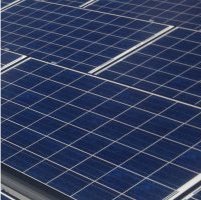Engineers at Stanford University have developed a coating that cools solar cells and boosts efficiency.
It’s a misconception that summer days are good for solar electricity production because of high temperatures as one of the major enemies of solar panels is heat.
The hotter the day is, the more it impacts on sunlight conversion efficiency. That’s why when solar panels, the temperature co-efficient rating is an important consideration as some solar panels will handle heat better than others.
A practical and cost efficient way to cool solar panels has been a holy grail of sorts for researchers and the new invention from Stanford shows great promise.
The development is a clear coating based on a thin, patterned silica material that captures and emits thermal radiation from infrared rays.
The work by Shanhui Fan, a professor of electrical engineering, research associate Aaswath P. Raman and doctoral candidate Linxiao Zhu has been published in the journal Proceedings of the National Academy of Sciences.
The latest development builds on work last year when the trio developed an ultrathin material that radiated infrared heat directly back toward space without warming the atmosphere.
“Solar arrays must face the sun to function, even though that heat is detrimental to efficiency,” says Professor Fan. “Our thermal overlay allows sunlight to pass through, preserving or even enhancing sunlight absorption, but it also cools the cell by radiating the heat out and improving the cell efficiency.”
Testing of the transparent overlay on a custom-made solar absorber that mimics a solar cell without generating electricity cooled the absorber by as much as 13 degrees Celsius. For a typical crystalline silicon solar cell, the researchers say the coating could boost absolute cell efficiency by more than 1 percent – which is quite an improvement.
Solar cells aren’t the only application for this technology. It also has the potential to be applied to car paintwork, without affecting aesthetics.
“Our photonic crystal thermal overlay optimizes use of the thermal portions of the electromagnetic spectrum without affecting visible light,” Zhu said, “so you can radiate heat efficiently without affecting color.”












































